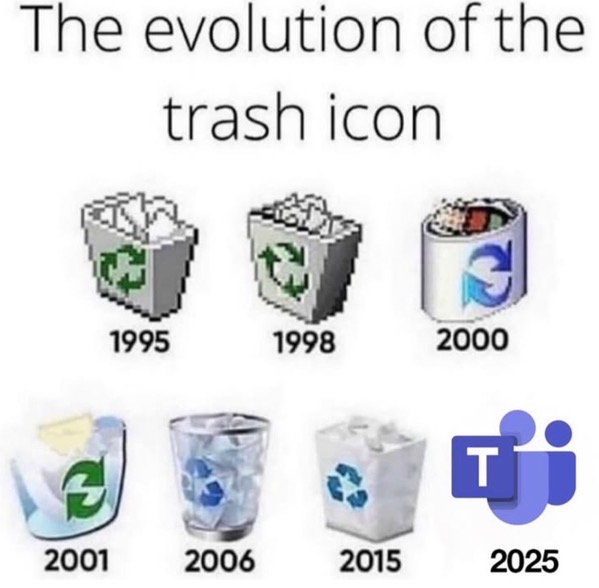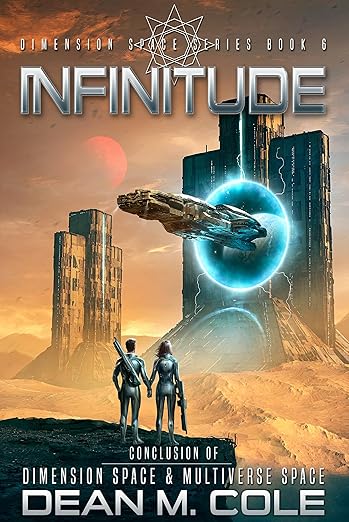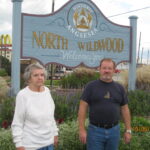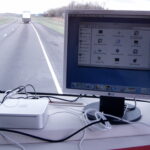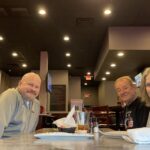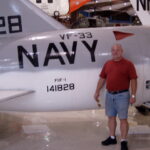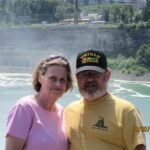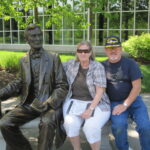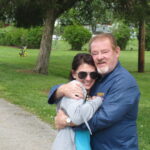
Vacation June 2025 – Covington, GA.
So happy that we are approaching that time of year when we get to go someplace nice like Twelve Oaks in Covington, GA. I’ll post pictures later.

Varkon-7
The sleek exploration vessel Ardent Dawn glided through the dark void of space, its metallic surface reflecting the distant glow of stars. Commander Rachel Malik leaned forward in her chair, staring out of the panoramic view screen at the planet below. Varkon–7, the first planet they had found in centuries that not only supported life but seemed to harbor intelligent beings.
“Commander,” came a voice from her left. Lieutenant Kimura, her chief science officer, was holding up a tablet, his face tense. “We’re picking up a transmission from the surface. It’s in response to the signals we’ve been sending out.”
Rachel’s heart quickened. After days of orbiting the planet and waiting for a response, this was it. First contact. Humanity’s first real encounter with another intelligent species. She stood up and walked toward the communications console, her eyes fixed on the translation matrix Kimura had brought up. The text scrolling across the screen was a garbled mixture of symbols, shapes, and what appeared to be a structured language.
“Can we translate it?” Rachel asked, her voice a mix of excitement and caution.
Kimura nodded, his fingers flying across the console. “The algorithm’s still processing, but we should have a rough translation in a few minutes. From what we can tell, they’ve been receiving our signals for some time.”
Rachel felt a mixture of relief and apprehension. They had been cautious, spending days analyzing the planet from orbit before sending out any transmissions. Varkon–7 was a verdant world, covered in thick forests and wide oceans, with massive crystalline structures dotting the surface. The signs of civilization were undeniable, but they had seen no movement, no activity. It was as if the planet’s inhabitants were hiding.
“What’s the message?” Rachel asked, unable to keep the edge from her voice.
Kimura’s eyes flickered as the text began to translate, and his expression hardened. “It’s… not what we expected, Commander.”
Rachel frowned, stepping closer to read the words on the screen. The first few lines were disjointed, as if the translation algorithm was struggling, but soon they became clearer.
Do not come here. Leave this place. You will not survive.
The message hung in the air like a lead weight. The bridge crew, previously buzzing with anticipation, fell into a tense silence. Rachel stared at the words, her mind racing. Was this a warning? A threat?
“Commander,” Lieutenant Williams from navigation chimed in, breaking the silence, “we’re detecting movement on the surface. Near the crystalline cities.”
Rachel’s eyes snapped back to the view screen, where the planet’s surface zoomed in to show massive structures rising from the forests. The crystals, previously dormant, were now glowing with a faint, pulsing light.
“They know we’re here,” Kimura said, his voice low.
Rachel gritted her teeth. She wasn’t about to back down. Not after all the years of preparation, all the training that had led them to this moment. They were humanity’s representatives, explorers of the unknown. They couldn’t just turn tail and leave.
“Prepare a landing party,” she said, her voice steady. “We’re going down.”
Within the hour, Rachel and her team were suited up and ready. The shuttle hummed as it descended through the atmosphere, the alien landscape growing larger by the second. Dense, dark green forests stretched as far as the eye could see, broken only by the towering crystalline structures that seemed to reach into the sky like fingers clawing toward the stars.
“We’re landing near the largest concentration we’ve detected,” Kimura said over the comms, his voice laced with tension. “No signs of hostility yet, but that warning…”
“We’ll be fine,” Rachel replied, though her heart was pounding in her chest. She didn’t believe her own words. The ominous message, combined with the eerie stillness of the planet, gnawed at her.
The shuttle touched down in a clearing near the edge of one of the crystalline cities. As the landing ramp lowered, a chill wind blew in, carrying with it a strange, metallic scent. The city was silent. No movement. No signs of life.
Rachel led the team out, their boots crunching on the soil. The crystals loomed above them, humming softly with an ethereal light. They moved slowly toward the nearest structure, scanning for life forms, but the instruments detected nothing.
“This place feels… wrong,” one of the security officers muttered, glancing around nervously.
Rachel nodded. Something was off. The air felt heavy, oppressive, as if the planet itself were watching them. As they approached the base of the crystalline structure, Kimura’s tablet beeped.
“I’m picking up something strange,” he said, frowning at the readings. “The crystals—they’re emitting some kind of… signal. It’s low-frequency, but it’s pervasive. It’s like the whole city is alive.”
Before Rachel could respond, a loud crack echoed through the air. The ground trembled beneath their feet. She spun around just in time to see the crystal structures begin to shift. The surface of the nearest one shimmered, and then, with a sickening groan, it split open, revealing a dark void within.
From the shadows emerged figures—tall, elongated, their bodies made of the same crystalline material as the structures. Their eyes glowed with an unnatural light, and they moved with an eerie grace, their limbs bending in ways that defied human anatomy.
“Back to the shuttle!” Rachel shouted, but it was too late.
The figures moved faster than she could have imagined. One of them reached out with a sharp, glass-like appendage and touched the security officer closest to it. The moment contact was made, the officer’s body stiffened, then shattered into a thousand tiny pieces, his form dissolving into dust as if he had never been there.
Panic erupted. The team fired their weapons, but the energy bolts dissipated harmlessly against the crystal beings, who continued to advance with terrifying precision.
“They’re not alive in the way we understand,” Kimura yelled, backing toward the shuttle. “They’re not organic!”
Rachel’s heart raced as she grabbed Kimura and pulled him toward the ramp. Another of her crew let out a scream as they were touched, dissolving into nothing in the blink of an eye. They had to get out. Now.
But as they reached the shuttle, the crystals around them began to glow brighter, pulsating in rhythm. A deafening hum filled the air, and the shuttle’s systems began to flicker.
“We’re trapped,” Kimura gasped, horror dawning in his eyes.
Rachel’s mind raced, desperate for a solution, but the truth was inescapable. The warning had been clear. They should have listened. Varkon–7 wasn’t a place for humans. It wasn’t a place for anything living.
As the crystal figures closed in, Rachel realized the terrible truth: they hadn’t come to an alien civilization. They had come to a graveyard. And now they were a part of it.
The last thing Rachel saw before the light overtook them was the shimmering crystal, reflecting the terror on her face as she dissolved into silence.
R.I.P. Irvin Gumpher
It is with great sadness that I post this. My step-father has passed away after a struggle with heart related issues. He was 77. He was the man responsible for helping me choose to join the Navy.
His obituary doesn’t mention it but he was a member of the Navy during the Vietnam war. He was a plank owner of the aircraft carrier CV-66 America. He was present during the U.S.S. Liberty incident.
He was a man who always tried to do the right thing and stuck to his traditional Christian values. I will remember him for all of the good things he’s done. There are probably far too many to list here. He loved his country, his family, and his lord, Jesus Christ.
I was his personal IT tech support person for a portion of his life. I remember splitting the costs of buying the next new Windows OS and the latest Apple OS with him because they were so expensive in the early 2000s.
I hope he is having a big ‘ole reunion with his father, mother, brother, and sister in heaven right now.
A few of my favorite pictures. Some are from a trip that he, my mom, and I took back in 2005. Some of the pictures were part of an archive that I kept for him being the IT guy and all that.















Short Story – The Aurora Protocol
The hum of the ship’s engines vibrated through Dr. Evelyn Calder’s bones as she adjusted her wrist device, activating the transparent interface projected into the air in front of her. She barely noticed the cold metal of the bridge beneath her boots. Her focus was solely on the image flickering into view: the Earth, rotating silently in the darkness of space, serene and unsuspecting.
“Commencing the Aurora Protocol,” Evelyn whispered to herself, the weight of those words heavy in her chest.
From the outside, Evelyn was the image of controlled scientist with decades of experience, chosen for the most important mission in human history. But inside, she was still grappling with the true nature of her work, the very reason she had been sent to the orbital station *Helios* alone. She wasn’t merely studying the stars. She was the architect of something far more dangerous, something that could rewrite the very fabric of human society.
As her fingers tapped at the holographic controls, the ship’s AI, Calypso, chimed in. “Aurora Protocol activation confirmed. Are you ready to proceed, Dr. Calder?”
Evelyn paused. She had spent years developing the Aurora Protocol, a program designed to identify and neutralize individuals whose actions had caused irreparable harm to others—specifically, men who had used their power to abuse, exploit, and torment those around them. It was a final solution to a problem society had tried and failed to address for centuries. But this wasn’t a criminal justice system. There would be no trials, no appeals, no media frenzy. The Aurora Protocol was absolute.
“Yes, proceed,” Evelyn replied, her voice steely.
As she said the words, the interface transformed, revealing a map of the Earth, pinpoints of light representing the locations of thousands of men. The algorithm had already identified them—abusers, tyrants, manipulators. Each one of them was marked for erasure. She wasn’t sending assassins or drones; the Aurora Protocol was far more elegant than that. Each target would simply vanish, their physical form dissolved into particles, erased from existence by an advanced nanite swarm. The world would go on, oblivious to their disappearance, as though they had never existed.
Evelyn stared at the glowing points of light. Some men were corporate moguls who had built empires on the backs of the vulnerable. Others were small-time predators, invisible in their communities but devastating to their victims. She had read the files on all of them, seen the damage they had done. The system had let them flourish. The Aurora Protocol would end that.
But her fingers hesitated above the final command. It wasn’t a question of morality anymore. She had come to terms with that long ago. This was about the consequences. Once she pressed that button, there would be no undoing it. A part of her wondered if humanity was ready for this, if society could cope with the sudden vanishing of thousands of individuals without any explanation. She knew they would never know the truth. The Aurora Protocol was designed to erase not just bodies, but memories, records, every trace of these men’s existence.
“Evelyn?” Calypso’s voice broke through her thoughts, soft but urgent. “Is everything alright? You appear… conflicted.”
She sighed, rubbing her temples. “I’m just thinking, Calypso. It’s a lot to process.”
“The Aurora Protocol was created to solve a problem that has plagued humanity for centuries. It is efficient, effective, and precise,” Calypso responded, her synthetic voice calm and measured. “But I understand your hesitation. The power you hold is incredible.”
Evelyn let out a breath. “Exactly. I can change everything—today, right now. But it feels…”
“Monumental,” Calypso finished for her.
“Monumental,” Evelyn echoed, her eyes drifting to one of the glowing points on the map. It represented a man named Donovan Price, CEO of a massive tech conglomerate. To the public, Price was a genius, a visionary. To those who worked for him, he was a tyrant. His predatory behavior had destroyed countless lives, but he was untouchable, shielded by wealth and influence.
Her fingers hovered over the command. Just one push, and Donovan Price—and thousands like him—would be gone forever. But a deeper part of her wondered, was this the right way to fight back? Could she justify acting as judge, jury, and executioner without giving them a chance to face their actions?
She clenched her jaw and pushed the thoughts aside. This wasn’t about them. It was about the people they had hurt, the lives they had destroyed. There was no other way to bring justice. Evelyn took a deep breath and tapped the final command.
“Protocol activated,” Calypso announced, her voice oddly soothing. “Nanite swarms are deploying.”
Evelyn watched as the map shifted. The lights representing the men flickered, one by one, until they were gone. She felt an eerie calm settle over her as the weight of what she’d done began to sink in. It was over. In a matter of minutes, the world below had been forever altered, though no one would ever know.
The targets had been erased from history—no trace of their existence left behind. Bank accounts, photos, memories—everything was gone. Families wouldn’t mourn because they wouldn’t remember. And those men’s victims would never feel the weight of their presence again.
Evelyn stood there, staring at the empty map, her mind racing with the implications. What had she done? Could she live with it? The power to change the world had been in her hands, and she had used it. But even as relief began to wash over her, she couldn’t shake the lingering question in her mind: Had she gone too far?
“Calypso,” she said softly, “status report.”
“All targets have been successfully erased,” Calypso replied. “The world has been updated accordingly. You have achieved your objective.”
Evelyn nodded but didn’t feel the victory she had expected. The world would undoubtedly be a better place without those men, without their cruelty poisoning society. But as she stood on the empty bridge of the *Helios*, gazing out at the peaceful planet below, she couldn’t escape the quiet thought that maybe justice should have been more than just their erasure.
And yet, the silence was comforting. Perhaps, she thought, some evils simply didn’t deserve to leave a trace behind.

